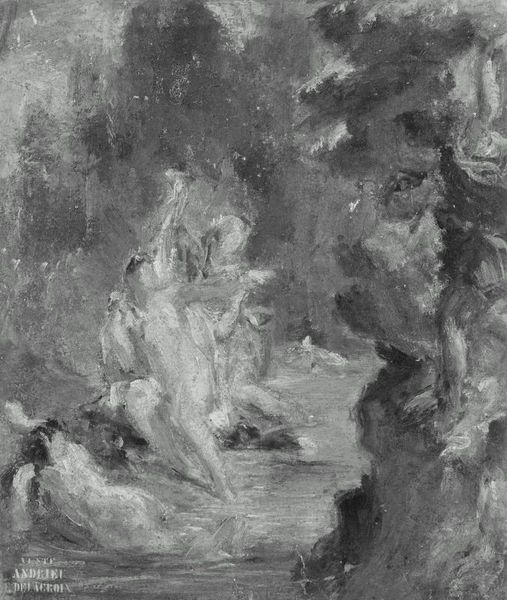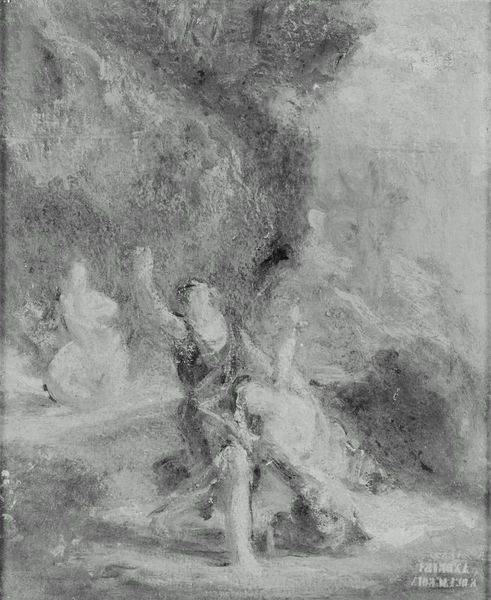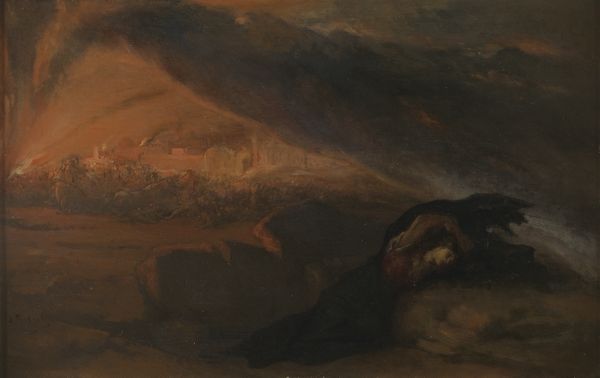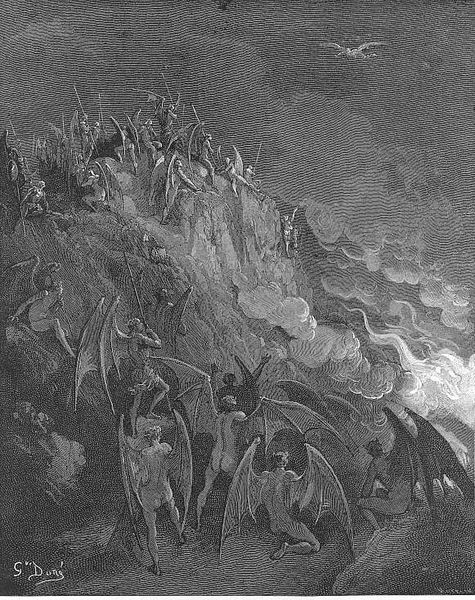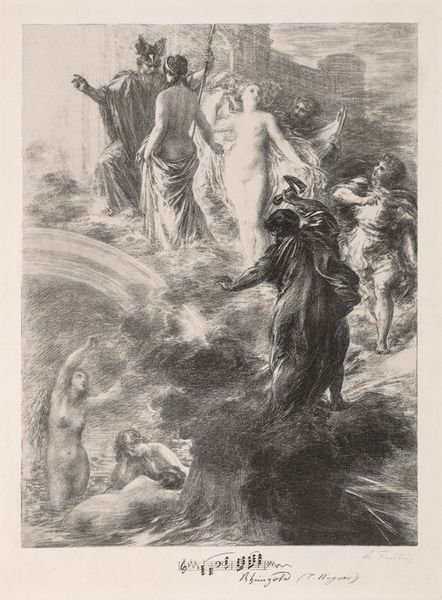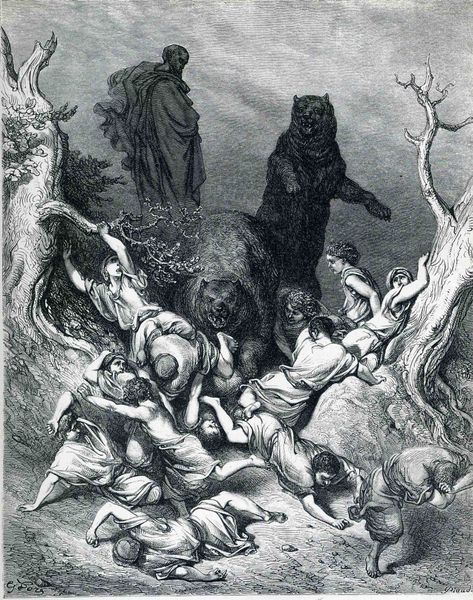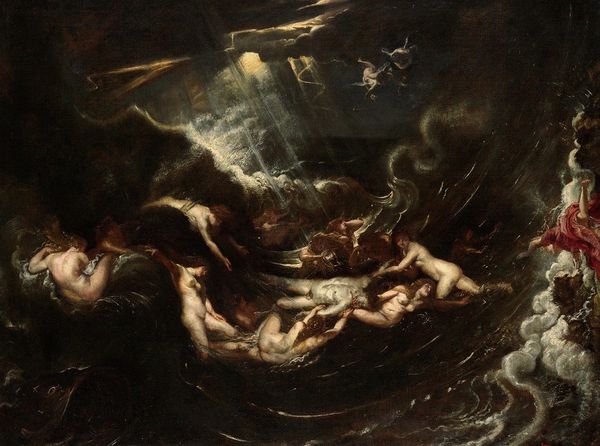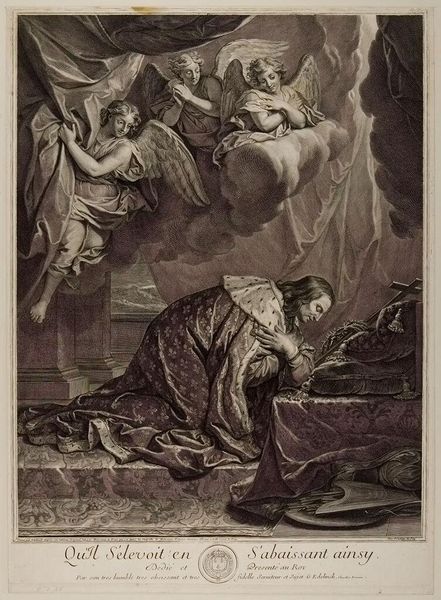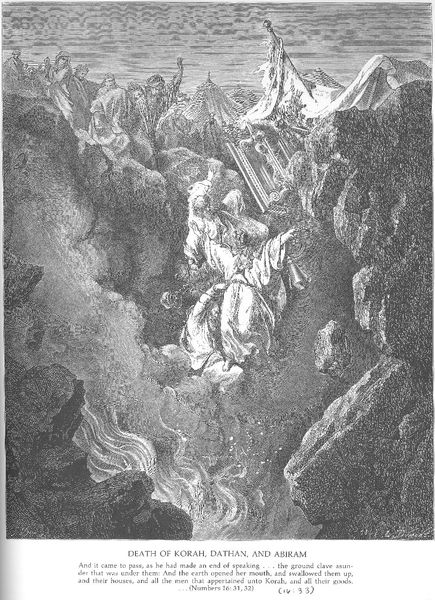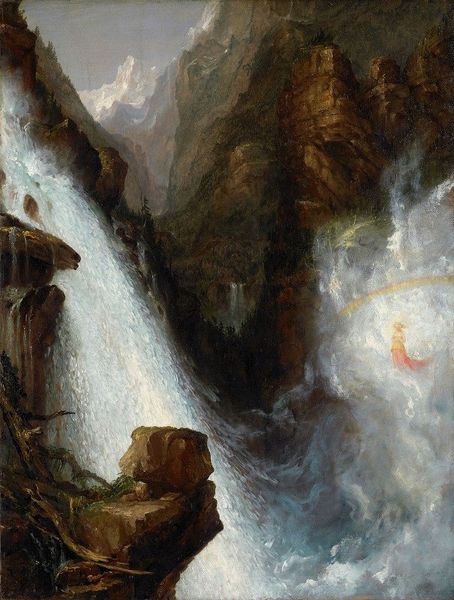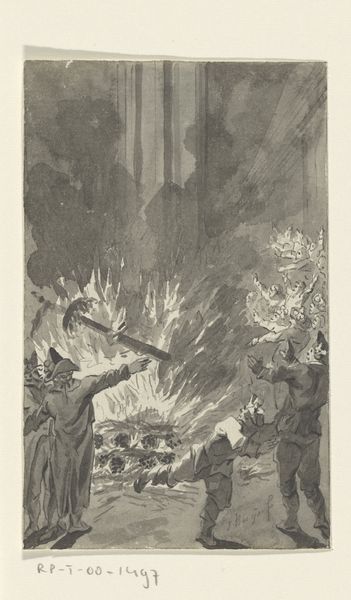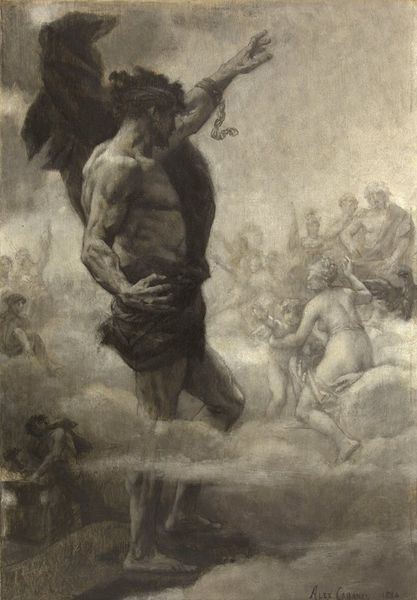
drawing, charcoal
#
drawing
#
charcoal drawing
#
figuration
#
roman-mythology
#
romanticism
#
men
#
mythology
#
charcoal
#
history-painting
#
charcoal
#
graphite
Copyright: Public domain
Curator: Eugène Delacroix's charcoal drawing, titled "Winter Juno Beseeching Aeolus to Destroy the Fleet," presents a dramatic mythological scene. Editor: My first impression is chaos. The monochromatic palette enhances a sense of tumultuous energy, look at how forms seem to emerge from and dissolve back into the swirling darkness. Curator: It's worth noting Delacroix’s preoccupation with classical literature and myth. Juno, in this scene, represents the political and social machinations of the gods impacting human affairs, a reflection of the societal power structures he saw around him. The political turbulence after the French Revolution surely shaped his vision. Editor: The artist’s emphasis is more about expressive gesture and the use of charcoal to generate chiaroscuro rather than descriptive clarity. Juno is barely discernible, just a wisp of form commanding Aeolus who is even less distinct but undeniably powerful. The light almost feels sculpted. Curator: Delacroix's romantic sensibility embraced dramatic narratives. Juno's plea would have resonated with audiences accustomed to grand historical painting, while also reflecting contemporary anxieties about authority. His use of myth provided a safe distance to address political themes. Editor: Exactly, notice that diagonal composition, and the upward movement established by the figures; it gives a sensation of the sublime and the tragic. The dense charcoal creates a depth that almost seems infinite, but not overwhelming, adding to the tragic weight. Curator: The drawing, in turn, provides invaluable insight into Delacroix’s artistic process and the sources he draws on, even as it speaks to lasting political dynamics. Editor: A study of line and tonality as much as it is of narrative; a piece where Delacroix successfully captures both a grand spectacle and intimate emotion within a single charcoal sketch.
Comments
No comments
Be the first to comment and join the conversation on the ultimate creative platform.
